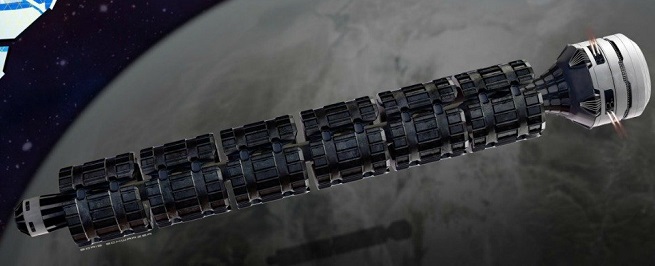Meet the `space train` concept that can get to Mars in 2 days

"In space, the most expensive portions of travel are the acceleration and deceleration phases. The energy required for those portions is tremendous, especially for something as heavy as a space train. In addition, if you were to start hauling cargo, it would become very expensive," he said on Solar Express’ site.
"However, once the train reached its cruising speed, its energy consumption would be minimal. That’s the idea behind the Solar Express concept. It would never stop; instead, space wagons/capsules would rendezvous with it."
While it’s important to keep in mind that this is just a conceptual idea and not a project actually being implemented in reality (yet, anyway), the team is looking at outside-of-the-box solutions to humanity’s space travel problems.
So, how would it work? Well, according to the team, Solar Express would consist of a series of aligned cylinders roughly 50 metres (164 feet) in length. Six of these cylinders - which you can think of as train cars - would link together in a straight line and hurtle through space.
To launch - one of the most expensive aspects of space travel - Solar Express would use rocket boosters, keeping a small amount of fuel on reserve to adjust course. Then, the train would slingshot around celestial bodies to gain speed without needing more fuel.
"Huge solar arrays located along the train’s path could be used to capture solar energy and transfer it by laser to supercapacitors. Water harvested from comets or small moons would be used for humans living on the train and transported to other stations," Bombardier explains.
"The harvested water could also be used to create hydrogen and propellant, but the main propulsion system should take the form of an ion thrusters."
Once in motion, the train would never stop. Instead, smaller crafts would join up with the train when it orbits a planet to gather supplies and offload passengers. The ability to keep going forever would cut costs, though the up-front construction cost would be considerable.
There are also a lot of technical questions that the team is still figuring out, such as how to control such a fast vehicle, how the space shuttles would offload goods from the moving craft, and how to get it hitting such high speeds.
"Obviously, there is a lot to consider, starting with dimensions, masses, speed, energy, etc. How do you control such a complex vehicle?" Bombardier said. "The Solar Express is a basic idea and we would like to know how we could improve it."
If you can take the imaginative leap, though, the possibilities of a working Solar Express would be insane. According to Kritin Tablang from Forbes, a trip from Earth to the Moon would take merely 2.13 minutes, while a trip to Mars would take about 37 hours. A trip to Neptune - the furthest planet from Earth - would take about 18 days.
To put that into perspective, it took Voyager 2 about 12 years to get to Neptune, and NASA says it takes roughly 260 days to get Mars using current technology.
Since the time requirement for space travel within our own Solar System is one of the many limiting factors for us humans, throwing around ideas to circumvent the traditional approach is always a good thing, no matter how unlikely they are to ever come to fruition.
Hopefully, researchers will have some answers to Bombardier’s lingering questions about Solar Express. Until then, we have to just imagine it.















-1741770194.jpg&h=190&w=280&zc=1&q=100)






-1741765030.jpg&h=190&w=280&zc=1&q=100)
























